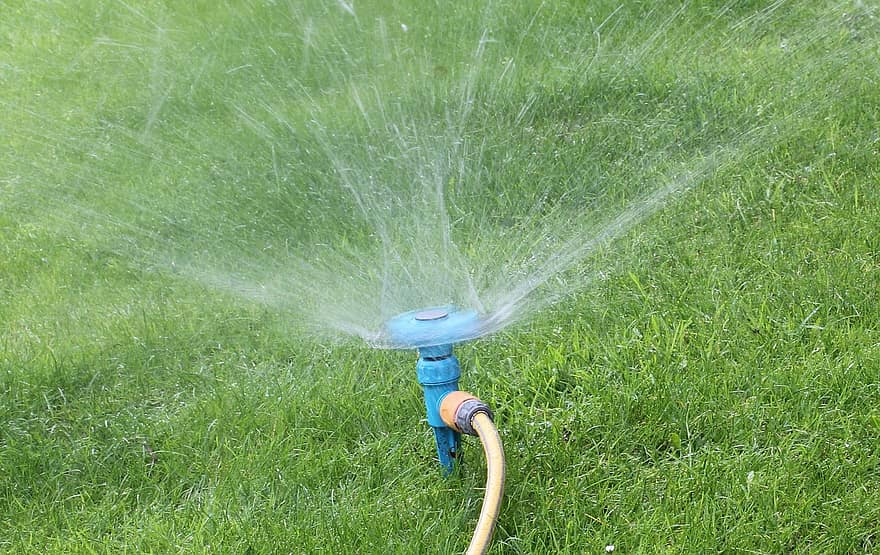High-Traffic Grass Seed Mixes for Durable Lawns

Selecting the right grass seed mix is crucial for areas that endure heavy foot traffic, like play areas and sports fields. These specialized mixes ensure your lawn remains resilient and lush despite regular use.
Benefits of High-Traffic Mixes
- Improved Wear Tolerance: Grass varieties in high-traffic mixes are chosen for their ability to withstand wear and recover quickly.
- Dense Growth: A dense turf is less susceptible to weeds, as it leaves little room for unwanted plants to establish.
Key Characteristics of Durable Grasses
- Rapid Growth Rate: The ability to grow quickly is essential for repairing any damage caused by continuous use.
- Deep Root Systems: Grasses with deep roots have enhanced access to nutrients and water, which supports better growth and recovery.
Selecting the Right Grass Seed Mix
When your lawn faces heavy foot traffic, choosing a grass seed mix that can withstand the hustle and bustle is critical to maintaining a resilient and healthy lawn.
Grass Types for High Traffic
Certain grass types possess the strength and durability needed for high-traffic areas. Consider these options:
- Kentucky Bluegrass: This grass recovers quickly from damage and is ideal for cooler climates.
- Perennial Ryegrass: Known for rapid germination and growth, this grass provides a tough lawn in temperate regions.
- Tall Fescue: With deep roots, tall fescue is well-suited for areas with high wear and varying conditions.
Each of these grass types has unique qualities that suit high-traffic lawns, such as rapid regrowth and resistance to wear and tear. Mixes often include a blend of these to leverage their collective strengths.
Assessing Soil and Climate Compatibility
The success of your high-traffic grass seed mix also depends on soil and climate compatibility:
- Soil Test: Conduct a soil test to understand pH levels and nutrient needs.
- Climate Factors:
- Cool-season: For regions with cold winters and mild summers, grasses like Kentucky bluegrass thrive.
- Warm-season: In warmer areas, Bermuda grass may be more appropriate, even though it’s less tolerant of heavy foot traffic.
Matching the grass type to your specific soil conditions and climate will ensure your high-traffic lawn stays lush and durable throughout the year.
Planting and Initial Care
The right approach to planting and initial care is crucial for establishing a robust lawn in high-traffic areas. Meticulous soil preparation and precise sowing techniques lay the groundwork for a durable, even-growing turf.
Soil Preparation for High-Traffic Areas
Before planting your high-traffic grass seed mix, it’s essential to create a hospitable environment for seed germination and root development.
- Begin by removing weeds and debris from the planting area.
- Perform a soil test to determine pH levels and nutrient deficiencies. Achieving a pH between 6.0 and 7.0 is ideal for most grass types.
- Amend the soil based on the soil test results by adding lime to raise pH or sulfur to lower it.
- Incorporate organic material, such as compost, to improve soil structure and fertility.
- Rake the soil to a fine tilth, ensuring a leveled surface and breaking up large clumps.
Sowing Techniques for Even Growth
Proper sowing is pivotal for achieving an even lawn without bare patches, particularly in areas that will endure frequent foot traffic.
- Choose a calm day to sow seeds, as wind can create an uneven distribution.
- Divide your seeds into two equal parts and sow half while walking in parallel rows one way and the other half at a 90-degree angle to the initial direction; this will help ensure uniform coverage.
- Use a broadcast spreader or your hand for smaller areas to distribute the seeds evenly.
- After sowing, lightly rake the area to cover the seeds with soil, aiming for about 1/8-inch depth.
- Apply a light layer of straw mulch if necessary to retain moisture and protect the seeds from birds.
- Water gently—the soil should be kept consistently moist but not waterlogged. Multiple light waterings may be needed throughout the day during the initial weeks.
Maintenance Strategies
Having a high-traffic grass mixture commands diligent care to remain robust and appealing. Your maintenance regimen will pivot on two pivotal actions: mowing/trimming and watering/fertilization. Each contributes to a lawn capable of enduring the bustle of activity.
Mowing and Trimming Best Practices
- Mow high: Keeping grass blades longer, typically between 2.5 to 3 inches, can promote deeper root growth, enhancing durability against traffic.
- Sharp blades: Ensure that your mower’s blades are sharp to achieve clean cuts and minimize stress to the grass.
Watering and Fertilization Schedule
- Deep, infrequent watering: It’s vital to water deeply but infrequently to encourage roots to grow deeper into the soil, which supports resilience in high-traffic areas.
- Early morning watering is best as it reduces evaporation and fungal diseases.
- Regular fertilization: Apply a balanced fertilizer according to the needs of your specific grass species and soil conditions. Ideally, fertilization should occur:
- During the growing season, at intervals based on the manufacturer’s recommendations or a soil test.
Troubleshooting and Recovery
For a lush lawn that withstands high traffic, it’s crucial to address issues promptly and provide the right recovery care.
Dealing with Wear and Tear
- Identify the Problem Areas: Inspect your lawn regularly for signs of wear, such as thinning grass or bare patches, especially in areas with frequent activity.
- Modify the Traffic Pattern: Encourage even use of your yard to prevent overuse of any one spot by creating paths or moving play areas periodically.
Recovery Tips for Damaged Lawns
- Reseeding: Lay down a high-traffic grass seed mix over the affected areas, ideally in the early spring or fall for optimal growth conditions.
- Nutrition: Apply a fertilizer formulated for high-traffic areas to provide the necessary nutrients for growth.
- Watering: Ensure your lawn receives consistent moisture, particularly after seeding, to help new grass establish.
- Aeration: Use a lawn aerator to alleviate soil compaction, allowing air, water, and nutrients to penetrate deeper, thus aiding the lawn’s rejuvenation.
Frequently Asked Questions
When selecting the best grass seed mix for your high-traffic lawn area, it is vital to consider durability, resilience to wear and tear, and compatibility with your climate and lifestyle.
What types of grass seed are recommended for high-traffic areas?
For areas that endure heavy foot traffic, look for grass varieties known for their toughness and quick recovery. Some of the top recommendations include:
- Kentucky Bluegrass, for its self-repairing properties and ability to create a dense turf, as detailed by TruGreen.
- Perennial Ryegrass, which germinates quickly and withstands wear.
- Tall Fescue, valued for deep rooting and tolerance to heavy usage.
How does tall fescue grass seed perform in high-traffic lawns?
Tall fescue stands out in high-traffic areas due to its:
- Deep root system that provides durability and reduces wear.
- Ability to withstand foot traffic better than many other cool-season grasses.
What attributes should one look for in a grass seed mix suitable for heavy traffic?
When you’re in the market for a grass seed mix, aim for these features:
- Rapid germination rate to establish and repair quickly.
- Dense growth habit to provide a thick, cushioning turf.
- High drought tolerance for sustained health in varied conditions.
Are there specific grass seed mixes recommended for lawns with pets, like dogs?
Yes, certain grass seed mixes are better suited for homes with pets. They usually include:
-
- Durable grass varieties like Bermuda grass that can handle the extra wear from pet activity.
- Fast-growing types that repair quickly from any damage caused by pets.
How do grass seed mixes for high-traffic areas fare in different climates, such as southern regions?
In southern regions, warm-season grasses like:
-
-
- Common Bermuda grass, which is robust and can heal quickly, making it a good fit for high-traffic and warm climates.
- Zoysiagrass, known for its tolerance to heat and heavy traffic.
-
These grasses typically perform better due to their growth patterns and heat resistance.
Can you suggest any durable grass seed varieties that also provide a resilient lawn?
For a resilient and lasting lawn, consider:
-
-
- Kentucky Bluegrass for its self-repairing capabilities and dense growth, ideal for cool-season areas.
- The Scotts Turf Builder Grass Seed High Traffic Mix, engineered for areas that see a lot of foot traffic and need extra durability.
-
Choose these varieties for a balance of aesthetics and functionality.
Last update on 2024-05-02 / Affiliate links / Images from Amazon Product Advertising API




